REIS - Respondents to pilot study
Rural Establishment Innovation Survey (REIS) (Also Known as National Survey of Business Competitiveness)
ERSR10 ALL CHANGES 10-24-13
REIS - Respondents to pilot study
OMB: 0536-0071
Revision date:

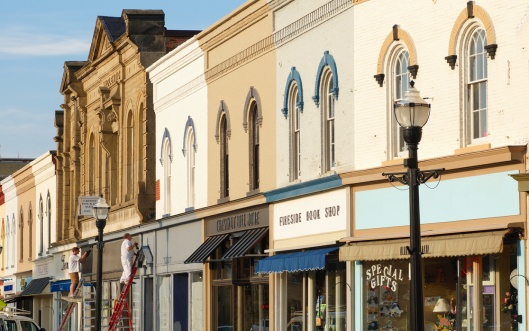
Sponsored
by: Economic
Research Service US
Department of Agriculture Contact:
Tim Wojan 202-694-5419
Conducted
by: Social
and Economic Sciences
Research Center Washington
State University Contact:
Yi Jen Wang 800-833-0867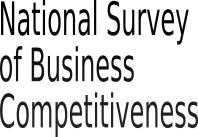


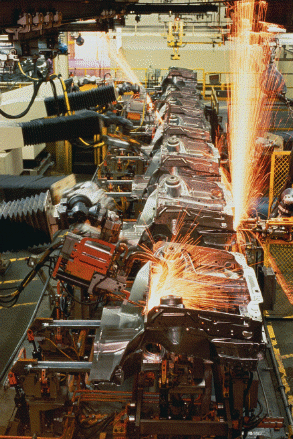


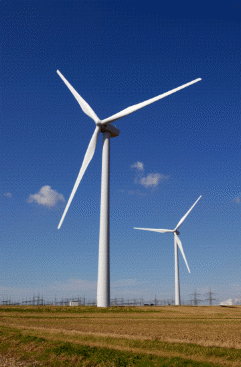


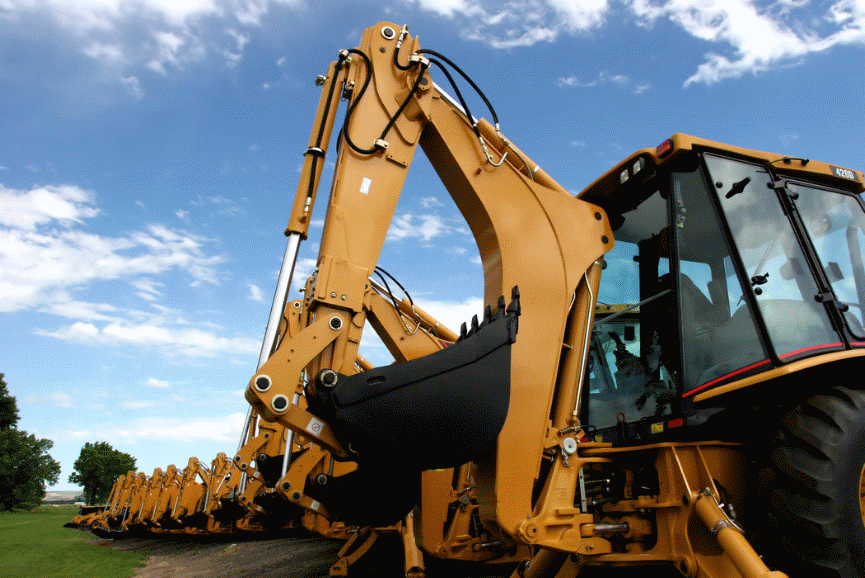


A
OMB control number 0536-0071 Expires
(07/31/2016)

YOUR RESPONSE IS VOLUNTARY. YOUR ANSWERS TO ALL QUESTIONS ARE CONFIDENTIAL. All information that is provided by participants to the National Survey of Business Competitiveness will only be used for statistical research purposes and reported in summary form. Your name and that of the business you represent will not be connected to your answers in any way. In accordance with the Confidential Information Protection provisions of Title V, Subtitle A, Public Law 107-347 and other applicable Federal laws, individual responses will be kept confidential and will not be disclosed in identifiable form to anyone outside of the research team. By law, every ERS and SESRC employee is subject to a jail term of up to 5 years, a fine of up to $250,000 or both if he/she discloses any identifiable information about research participants.
1
 . What
is your job title or role?
. What
is your job title or role?
________________________________________________________ job title or role
2. Approximately what year did this business at this location begin operating?
_______ year
3. What is the main product or service at this business location?

4. Does this business have only one location or more than one location?
1 Only one location Skip to question 5
2 More than one location
4a. (If more than one location) Is this location this business’s headquarters or is it a branch location?
1 Headquarters
2 Branch location
5. How important is each of these factors for locating this business in this community? (Check the appropriate level of importance for each factor.)

Not Somewhat Very Not Don’t
Factor important important important applicable know
▼ ▼ ▼ ▼ ▼
a. Owner-ties to area 1 2 3 4 5
b. Availability of low-cost labor 1 2 3 4 5
c. Available skilled labor pool 1 2 3 4 5
d. Access to transportation 1 2 3 4 5
e. Access to broadband or high speed internet 1 2 3 4 5
f. Access to material inputs 1 2 3 4 5
g. Access to customers 1 2 3 4 5
h. Government incentives 1 2 3 4 5
i. Low taxes 1 2 3 4 5
j. Strong or growing local economy 1 2 3 4 5
- 3 -
5
 a. How
important is each of these factors for making this community an
attractive place to work? (Check
the appropriate level of importance for each factor.)
a. How
important is each of these factors for making this community an
attractive place to work? (Check
the appropriate level of importance for each factor.)
Not Somewhat Very Not Don’t
Factor important important important applicable know
▼ ▼ ▼ ▼ ▼
a. Opportunities for outdoor recreation 1 2 3 4 5
b. Scenic beauty (e.g., natural or architectural) 1 2 3 4 5
c. Climate 1 2 3 4 5
d. Access to arts and entertainment 1 2 3 4 5
e. Quality of local schools 1 2 3 4 5
f. Access to health care 1 2 3 4 5
6. In 2012, at this location, what was the average number of workers who were in each category? (Please include all workers in these two categories)
Number of
Worker category workers
▼
a. Full-time and part-time employees on your payroll _______
b. Independent contractors or temporary workers NOT ON YOUR PAYROLL _______
Total _______
If 5 or more workers in total, continue with question 7
If less than 5 workers in total, skip to question 52 on page 16
7. In the past 12 months, did this business…
Yes No
▼ ▼
a. Offer a health insurance option for any workers 1 2
b. Offer a retirement plan 1 2
c. Pay for worker education, professional development, or training 1 2
d. Offer paid maternity, paternity, or family leave 1 2
e. Have an employee-ownership plan 1 2
f. Offer paid time off for workers to volunteer 1 2
8a. How many workers are managers at this location? (Managers are workers who direct or oversee operations.)
_______ number of managers
8b. How many workers are professionals? (Professionals are workers such as engineers or accountants.)
_
- 4 -
9
 . In
2012, what is your best estimate of the average hourly wage for
non-salaried workers at this location?
. In
2012, what is your best estimate of the average hourly wage for
non-salaried workers at this location?
Check here if you do not have any non-salaried workers.
_______ average hourly wage
10. In 2012, at this location, what percent of workers were in the following occupational categories? (Please include all workers in these categories. Total percent should equal 100%.)
(You may answer in percent or numbers.)
Percent of Number of
Occupational category workers OR workers
▼ ▼
a. Management and professional _______% _______
b. Services _______% _______
c. Sales and office support _______% _______
d. Natural resources, construction, and maintenance _______% _______
e. Production, transportation, and material moving _______% _______
= 100%
10a. For each occupational category, what was the minimum educational level needed in 2012? (Check the appropriate level of education for each occupational category.)
Less than At least At least At least More than
Occupational category high school HS diploma Assoc degree/ four-year four-year
or no specific or GED vocational college college
education certification degree degree
▼ ▼ ▼ ▼ ▼
a. Management and professional 1 2 3 4 5
b. Services 1 2 3 4 5
c. Sales and office support 1 2 3 4 5
d. Natural resources, construction, and maintenance 1 2 3 4 5
e. Production, transportation, and material moving 1 2 3 4 5
11. Is any part of the workforce unionized or covered by a collective bargaining agreement?
1 Yes
2 No
12. In the past 3 years, how difficult has it been to find qualified applicants for your workforce, not including managers and professionals?
1 Very difficult
2 Somewhat difficult
- 5 -
1
 2a. (If
very or somewhat difficult) Why has it been difficult to find
qualified applicants for your workforce?
2a. (If
very or somewhat difficult) Why has it been difficult to find
qualified applicants for your workforce?
Yes No
▼ ▼
a. Quality of the labor pool 1 2
b. Increases in required skills and knowledge 1 2
c. Insufficient number of workers available locally 1 2
d. Limited interest among job seekers for openings at this business 1 2
13. Does this business have written position descriptions?
1 Yes
2 No Skip to question 14a
13a. Are training requirements documented in those position descriptions?
1 Yes
2 No Skip to question 14a
13b. Does this business track whether workers complete or if they have already completed these training requirements?
1 Yes
2 No
14a. Does this business currently use personal computers or laptops, not including smart phones?
1 Yes
2 No Skip to question 17 on the next page
14b. Are the following technologies currently used at this business?
Yes No
▼ ▼
b. Broadband or high speed internet 1 2
c. Sale of products or services over the Internet (e-commerce) 1 2
d. Supplies purchased over the Internet (e-procurement) 1 2
e. Web advertising 1 2
f. Direct e-mail marketing 1 2
g. Social media (e.g., LinkedIn or Facebook) 1 2
h. Business issued smartphones to workers 1 2
i. RFID readers, barcode, or optical scanners (e.g., Radio Frequency Identification) 1 2
j. Computer software specifically designed for your business or industry 1 2
k. An integrated enterprise resource planning system (e.g., SAP or Microsoft Dynamics, or Oracle Applications that include accounting, logistics, human resources, sales management, along with other functions) 1 2
l. Stand-alone supply chain or logistics management software 1 2
m
- 3 -
- 3 -
- 6 -
 5. What
percent of the sale of products or services comes over the Internet?
5. What
percent of the sale of products or services comes over the Internet?
Check here if you do not sell any products or services over the Internet.
_______ percent of sales over the Internet
16. What percent of your workforce, not including managers and professionals, uses computers on a daily basis?
_______ percent of the workforce who uses computers
17. Have the following factors limited this business’s use of information and communications technology?
Yes No
▼ ▼
a. The cost of equipment and software 1 2
b. The cost of information and communications services 1 2
c. Lack of access to adequate broadband or high speed internet 1 2
d. Lack of knowledge 1 2
e. Difficulty integrating new technologies into the current way
you do business 1 2
18. Businesses obtain information about new opportunities or new ways of doing things from many sources. Which sources have been most valuable for this firm?
Not at all Somewhat Very
Sources of new information valuable valuable valuable
▼ ▼ ▼
a. Suppliers 1 2 3
b. Customers 1 2 3
c. Other business people in your industry 1 2 3
d. Other business people NOT in your industry 1 2 3
e. Business or trade association conferences or publications 1 2 3
f. Your own workers 1 2 3
g. Media (e.g., newspapers, television, internet) 1 2 3
h. Private consultants 1 2 3
i. University extension, community colleges, or business schools 1 2 3
19. Of the sources identified as very valuable, where are they located?
In Outside community Beyond a
your within a reasonable Not
community reasonable drive drive Applicable
▼ ▼ ▼ ▼
a. Suppliers providing valuable information 1 2 3 4
b. Customers providing valuable information 1 2 3 4
c. Other business people in your industry
providing valuable information 1 2 3 4
d. Other business people NOT in your
industry providing valuable information 1 2 3 4
- 7 -
2
 0. Approximately
what percent of 2012
final shipments or billed services went to customers… (Total
should equal 100%.)
0. Approximately
what percent of 2012
final shipments or billed services went to customers… (Total
should equal 100%.)
Check here if you did not have any sales in 2012.
a. Locally, within a reasonable drive _______%
b. Beyond a reasonable drive in the United States _______%
c. Internationally _______%
= 100%
21. Was this location in business in 2007?
1 Yes
2 No Skip to question 22
21a. What is your best guess of the percent of 2007 final shipments or billed services that went to customers… (Total should equal 100%.)
Check here if you did not have any sales in 2007.
a. Locally, within a reasonable drive _______%
b. Beyond a reasonable drive in the United States _______%
c. Internationally _______%
= 100%
22. In 2012, what percent of goods and services sold by this business were sold to… (Total should equal 100%.)
Check here if you did not have any sales in 2012.
a. Other businesses _______%
b. Government _______%
c. Individuals _______%
= 100%
23. Is the current market for your products or services…
1 Growing
2 Stable
3 Declining
4 Mixed (e.g., some are declining, others growing)
5 Uncertain
24. Does this business require workers to document good work practices and lessons learned?
1 Yes
- 8 -
2
 5. How
often does this business monitor customer satisfaction through
analysis of complaints, customer satisfaction surveys, focus groups,
or other methods?
5. How
often does this business monitor customer satisfaction through
analysis of complaints, customer satisfaction surveys, focus groups,
or other methods?
1 Never
2 Occasionally
3 Regularly
26. How often are processes changed to fix problems identified through customer complaints?
1 Never
2 Occasionally
3 Regularly
27. In the past 3 years, did this business…
Not
Yes No applicable
▼ ▼ ▼
a. Produce any new or significantly improved goods 1 2 3
b. Provide any new or significantly improved services 1 2 3
c. Introduce new or significantly improved methods
of manufacturing or producing goods or services 1 2 3
d. Introduce new or significantly improved logistics, delivery, or
distribution methods for your inputs, goods, or services 1 2 3
e. Introduce new or significantly improved support activities
for your processes 1 2 3
f. Introduce new or significant improvements
in your marketing methods 1 2 3
28. In the past 3 years, did this business have any improvement or innovation activities that were…
Yes No
▼ ▼
a. Abandoned 1 2
b. Incomplete 1 2
29. Did you check “Yes” to any answers in question 27 or question 28?
1 Yes Skip to question 30 on the next page
2 No
29a. Please tell us why improvement or innovation activities have not been necessary or possible.


If you answered ‘yes’ to question 29, continue to question 30 on the next page.
If you answered ‘no’ to question 29 and answered
29a, skip to question 35 on page 11.
- 9 -
3
 0. In
2012, did this business sell any new or significantly improved goods
or services with the following improvements?
0. In
2012, did this business sell any new or significantly improved goods
or services with the following improvements?
Yes No
▼ ▼
a. Improved performance 1 2
b. More user-friendly 1 2
c. Reduced costs 1 2
d. New features 1 2
e. New service capabilities 1 2
31. In the past 3 years, did this business start selling any new or significantly improved goods or services before your competitors in at least one of your markets? (Include a product even if it was available in another market.)
1 Yes
2 No
3 Uncertain
32. In 2012, what percent of this business’s sales came from new or significantly improved goods or services? [If none, enter 0 (zero).]
_______ percent of sales
33. In the past 3 years, did this business engage in any of the following innovation-related activities?
Yes No
▼ ▼
a. In-house research and development (R&D) to increase knowledge
or devise innovations 1 2
b. Purchase research and development (R&D) from research organizations
or other branches of this business 1 2
c. Conduct in-house design activities to improve aesthetics
of product or packaging 1 2
d. Purchase design services 1 2
e. Purchase machinery, equipment, computers, or software
to implement innovations 1 2
f. Purchase or license patents or inventions to implement innovations 1 2
g. Purchase knowledge or expertise to implement innovations 1 2
h. Plan, engineer, design, or conduct other development work
to implement innovations 1 2
i. Train staff to develop or introduce innovations 1 2
j. Market research, advertising, or other marketing activities linked
to implementing innovations 1 2
- 10 -
3
 4. In
the current environment, if excess cash
were available, how likely is it that these funds would be
used to…
4. In
the current environment, if excess cash
were available, how likely is it that these funds would be
used to…
Not at all Most
likely Probably definitely
▼ ▼ ▼
a. Provide additional training of workers 1 2 3
b. Repay debt 1 2 3
c. Provide a reserve or cushion 1 2 3
d. Fund additional innovation projects 1 2 3
e. Fund additional investment projects,
such as replacing old equipment or for expansion 1 2 3
35. Does this business produce products or provide services in any of the five green sectors?
Yes No
▼ ▼
a. Produce renewable energy 1 2
b. Increase energy efficiency 1 2
c. Conserve natural resources 1 2
d. Prevent, reduce, or clean up pollution 1 2
e. Produce clean transportation fuels 1 2
36. In the past 3 years, did this business participate in any patent applications?
1 Yes
2 No Skip to question 37
3 Don’t know Skip to question 37
36a. In the past 3 years, how many patent applications did this business participate in?
_______ number of patent applications
36b. In the past 3 years, how many patents were awarded?
_______ number of patents awarded
37. In the past 3 years, did this business…
Yes No
▼ ▼
a. Register an industrial design 1 2
b. Register a trademark 1 2
c. Produce materials eligible for copyright 1 2
d. Use trade secret protections (e.g., non-disclosure agreements,
non-compete clauses, or sought remedies for misappropriation) 1 2
- 11 -
3
 8. During
the economic recession period (2008-2009), to what extent did this
business commit resources to innovate?
8. During
the economic recession period (2008-2009), to what extent did this
business commit resources to innovate?
1 Increased resources for innovation activities
2 There was no change in innovation resources
3 Delayed or decreased resources for innovation
4 Not applicable, e.g., not in business at that time
39. Compared to 2012, in this current year (2013) would you say resources for innovation at this business have been…
1 Increased
2 Kept the same
3 Decreased
40. In the past 3 years, has this business… Yes No
▼ ▼
a. Increased the variety of goods or services offered 1 2
b. Increased market share or entered new markets 1 2
c. Begun exporting goods or services 1 2
d. Reduced time to respond to customer needs 1 2
e. Improved flexibility of production or service provision 1 2
f. Increased capacity of production or service provision 1 2
g. Reduced labor costs per unit output 1 2
h. Reduced materials and energy required per unit output 1 2
i. Improved worker satisfaction or reduced worker turnover 1 2
41. The following is a list of factors related to this business’s location. For each one, please tell us how much of a problem it is for this business’s ability to compete.
Not a A minor A major
Factor problem problem problem
▼ ▼ ▼
a. Zoning or development regulations 1 2 3
b. Vitality of the local economy 1 2 3
c. Access to financial, legal, and other business services 1 2 3
d. Access to equipment and software suppliers 1 2 3
e. Access to training courses 1 2 3
f. Access to transportation or freight forwarding
facilities and services 1 2 3
g. Availability of broadband or high speed internet 1 2 3
h. Local availability of mobile or cellular service 1 2 3
i. Local roads and bridges 1 2 3
j. Cost of facilities and land 1 2 3
k. Attractiveness of the area to managers and professionals 1 2 3
l. Quality of primary and secondary schools 1 2 3
m. Environmental regulations 1 2 3
n. State and local tax rates 1 2 3
- 12 -
4
 2. How
involved in promoting business are the following institutions in your
community?
2. How
involved in promoting business are the following institutions in your
community?
Not at all
active or Somewhat Very Don’t
Not present active active know
▼ ▼ ▼ ▼
a. Local government development effort
1. Village, town, or city 1 2 3 4
2. County 1 2 3 4
3. Regional or multi-county 1 2 3 4
b. Business association (e.g., Chamber of Commerce) 1 2 3 4
c. College, university, or extension support for local business 1 2 3 4
d. Community foundations or nonprofit organizations 1 2 3 4
e. Local investors 1 2 3 4
f. Banks 1 2 3 4
42a. How much civic leadership does THIS business provide in your community?
1 None
2 Some
3 A lot
43. Do you have a good understanding of the decisions that led to the founding of this business?
1 Yes
2 No Skip to question 44 on the next page
43a. (If Yes) Was this business originally founded around a new or customized product or service that was created by one of the founders of this business?
1 Yes
2 No Skip to question 44 on the next page
3 Don’t know Skip to question 44 on the next page
43b. (If Yes) Thinking about this new or customized product or service, why was it originally developed?
1 One of the founders created it for personal use
2 One of the founders created it for use at a previous job or business
3 One of the founders identified a business opportunity
- 13 -
4
 4. The
final section of the survey is to assess which types of government or
government-sponsored programs are the most helpful to businesses. If
used, please rate how important each program has been for this
business in the past 3 years.
4. The
final section of the survey is to assess which types of government or
government-sponsored programs are the most helpful to businesses. If
used, please rate how important each program has been for this
business in the past 3 years.
If Used, how important
Used? was this program?
Not Somewhat Very
Program Yes No important important important
▼ ▼ ▼ ▼ ▼
a. Direct loans from a government agency
(e.g., USDA B&I Direct Loan) 1 2 1 2 3
b. Government insurance or guarantee for loans
(e.g., SBA 7(a) Loan Program) 1 2 1 2 3
c. Revolving loan funds run by a nonprofit
or government organization 1 2 1 2 3
d. Tax incentives by state or local government,
including enterprise zones, urban revitalization
areas, Tax Increment Financing districts 1 2 1 2 3
e. Government-assisted industrial parks
or business incubators 1 2 1 2 3
f. Government-funded technology assistance
programs 1 2 1 2 3
g. Government-assisted worker-training programs 1 2 1 2 3
h. National Innovation Marketplace 1 2 1 2 3
45. Did this business try to borrow money for any purpose in the past 3 years?
1 Yes
2 No Skip to question 47 on the next page
3 Don’t know Skip to question 47 on the next page
45a. Please indicate the sources you tried to borrow from in the past 3 years below. If you did try to borrow money from a source, how much of the funding did you receive?
Tried to If Yes,
borrow money? amount received?
Yes No All Some None
▼ ▼ ▼ ▼ ▼
a. Commercial bank 1 2 1 2 3
b. Savings & Loan or credit union 1 2 1 2 3
c. Finance or leasing company 1 2 1 2 3
d. Insurance or mortgage company 1 2 1 2 3
e. Family or friends 1 2 1 2 3
f. Federal, state, or local government 1 2 1 2 3
g. Credit or advance from a customer 1 2 1 2 3
h. Angel capital funding 1 2 1 2 3
i. Venture capital funding 1 2 1 2 3
j Personal sources of funds (other than credit cards) 1 2 1 2 3
k. Personal home equity loan 1 2 1 2 3
l. Other personal loan 1 2 1 2 3
m
- 14 -


46. How were the funds that this business borrowed or wanted to borrow to be used?
Yes No
▼ ▼
a. Cash flow or operating costs 1 2
b. Real estate or structures 1 2
c. Replacement of old industrial plant location, equipment, or vehicles 1 2
d. Investment in additional plant, equipment, or vehicles 1 2
e. Repayment of debt 1 2
f. Reserve or cushion 1 2
g. Inventory 1 2
h. Fund innovation projects 1 2
i. Investment in intangible assets, such as branding, training, or design 1 2
47. In the past 3 years, were business profits (retained earnings) used to finance this business?
1 Yes
2 No Skip to question 48
47a. Compared with borrowed funds, how important were business profits for funding investment?
1 More important
2 Less important
3 Equally important
4 Not applicable
5 Don’t know
48. Which of the following best describes your current position?
1 Mid level manager
2 Senior manager
3 Executive or owner
4 Other, please describe:
49. Which statement best describes your familiarity with how innovation is carried out in this business?
1 Not familiar
2 Slightly familiar
3 Moderately familiar
4 Strongly familiar
- 15 -
5
 0. What
is your gender?
0. What
is your gender?
1 Male
2 Female
51. How long have you worked at this business?
_______ number of years worked
52. If you have any additional comments about this survey or innovation in general, please write them in the box below.

Thank you!!
Please return your completed questionnaire in the envelope provided
or to:
National Survey of Business Competitiveness
Social & Economic Sciences Research Center
Washington State University
PO Box 641801
P
- 16 -
| File Type | application/vnd.openxmlformats-officedocument.wordprocessingml.document |
| Author | twojan |
| File Modified | 0000-00-00 |
| File Created | 2021-01-27 |
© 2025 OMB.report | Privacy Policy